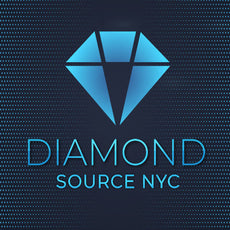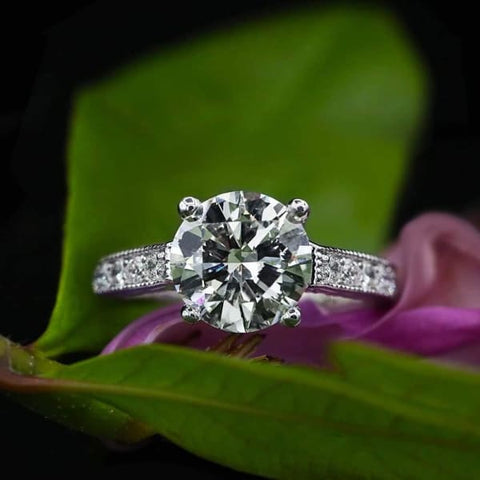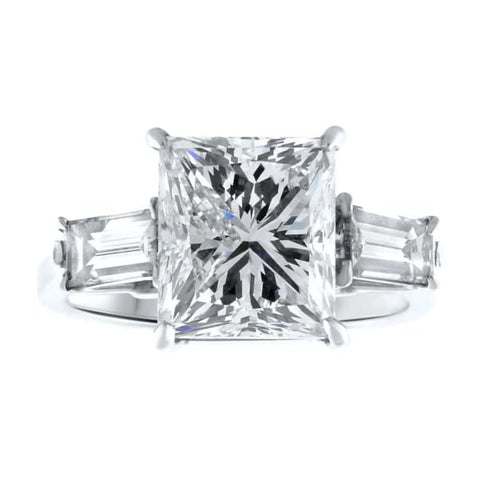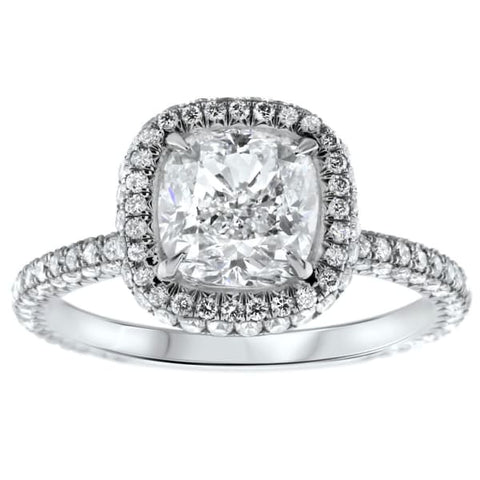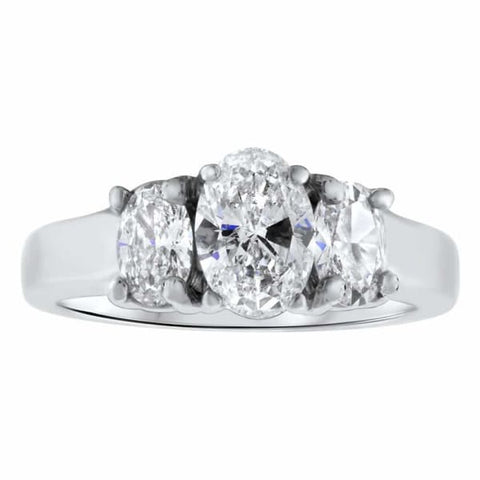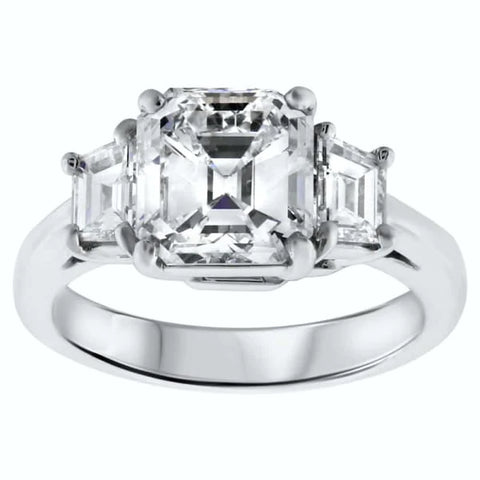Best Rolex, Patek Philippe and Audemars Piguet Watches for Men and Women in NYC
(212) 730-5959 / (888) 342-9949
The Most Popular Diamond Shapes, and Why People Pay for Them
The most popular diamond shapes have changed through the centuries. Before the twentieth century, the most sought-after shapes were cuts that bring out the best flashes of color or "fire." At the turn of the century, the preference was more for staircase-like step cuts. Since 1919 when it was first introduced, round cuts have consistently been the most beloved cut. Though the marquise cut had its share of the limelight in the 1990s, round diamonds have since enjoyed a resurgence. In this article, we count down the eight most popular cuts, why they are coveted, and why people pay money for them.
The Most Popular Diamond Cut: Round Brilliant Diamonds
Using a formula created by diamond cutter Marcel Tolkowsky, round diamonds have the most remarkable brilliance among all diamond cuts. Though there are two types of round cuts, the round brilliant, and the "old" round (or European) cut, the most popular shape is the brilliant round cut. With around 58 facets that make the light travel efficiently throughout the diamond, it has maximum sparkle.
Aside from being the most popular, round brilliant cut diamonds are the most expensive. Of all diamond cuts, brilliant round cuts have the most facets and are the most challenging for diamond cutters to make. Moreover, the cutting process for round diamonds makes them lose around 60% of their natural weight, compared to princess-cut diamonds, which only lose 20% of their natural weight.
Princess Cut Diamonds
The second most popular diamond cut is the princess cut. Introduced in the 1980s, it is one of the mixed cuts that combines the elements of step and brilliant cuts. Since its inception, it has been rising in popularity because of its comparatively affordable price and because it looks bigger than other comparable cuts, including brilliant round cuts even at the same weight. Though it has slightly less brilliance and fire than round cuts, it is about 25% less expensive at the same color, clarity, and weight because only 20% of its natural weight is lost during the cutting process, compared to the 60% loss when making round brilliant cuts.
The Classic Appeal of Cushion Cut Diamonds
Also known as the "oldmine" diamond cut, it is the closest a diamond cutter can get to a round brilliant diamond cut without the aid of technology. The name "cushion" comes from the fact that all "old mine" cuts have rounded edges. This type of cut was prevalent in the 18th century because it was the best cut to enhance a diamond’s brilliance and fire available with the technology of that time. Though supplanted by the brilliant round cut, it is rising in popularity nowadays because of its affordability, durability, and classic look. Though having slightly less brilliance and fire than brilliant round cuts, it is a more affordable diamond cut option with an appearance that approaches the brilliant round cut.
Oval Cut Diamonds
Invented and perfected by the Russian diamond cutter Lazare Kaplan, oval-cut diamonds are becoming increasingly popular, especially for people looking for alternatives to round brilliant cut diamonds. Having slightly less brilliance than round cut diamonds, its unique shape offers almost the same feel as its more expensive counterpart. Oval-cut diamonds look larger per carat than round brilliant cut diamonds because of their elongated shape. Moreover, when worn on a ring, it enhances the appearance of the fingers by creating an illusion of being slender. Because less raw diamond material is lost during the cutting process, an oval cut diamond of the same weight, clarity, and color costs almost 40% less than a round brilliant cut diamond.
The Sparkling Elegance of Emerald Cut Diamonds
The emerald cut is one of the oldest diamond cuts in existence. It exhibits significantly less brilliance and fire than other diamond cuts. It has a lower demand than comparable diamond sizes and weights, making it one of this list's most affordable diamond cuts. However, it has so much going for it with its distinct flair and uniqueness. If you are looking for a cut that highlights the clarity of the diamond, the straight clean lines and substantial table area enhance the diamond's quality. Moreover, its elongated shape often looks more prominent than other diamond cuts.
Radiant Cut Diamonds
Combining the brilliance of round cut diamonds with the timeless elegance of emerald cut diamonds, the radiant cut is a recent arrival on the scene, introduced by Henry Grossbard in the 1970s. Many people are still unaware of its existence hence its comparatively lower demand than other diamond cuts. The radiant cut features 70 facets, giving it a brilliance that approaches brilliant round cuts. Its many facets help hide flaws and inclusions while making the diamonds look visually larger than brilliant round diamonds.
The Visual Opulence of Asscher Cut Diamonds
If you are looking for the clean and strong lines of the emerald cut but with an enhanced brilliance, Asscher cut diamonds can be a perfect choice for you. A higher crown than emerald-cut diamonds creates the brilliant "hall of mirrors" that you might expect for diamonds with deep step cuts. Because of its shape, more raw diamond material weight is saved, contributing to its comparatively affordable price per carat. Its 58 facets give it more brilliance than emerald cut diamonds. As shown in the ring above, the vintage Art Deco style offered by Diamond Source NYC enhances its luxury and charm that harks back to the 1920s when this style was in vogue.
The Unique Distinction of Pear Cut Diamonds
The teardrop, or pear cut, diamond has always maintained steady popularity and has always been seen as a popular choice for accent stones in a three-stone ring setting. However, it is picking up in popularity as a center stone. If you are looking for a diamond shape that appears to elongate your finger, pear cut diamonds are one of the best choices for a center stone. A few of the most famous diamonds have this cut, such as the 531-carat Great Star of Africa and the 69-carat pear-shaped diamond necklace once owned by Elizabeth Taylor and Richard Burton. The pear cut diamonds are also known as the "teardrop" diamond owing to their shape.
Final Thoughts:
The desirability of a diamond doesn't just originate from the cut, carat, cost, and clarity. Though some cuts enhance the beauty of the diamonds, such as the brilliant round cut, a diamond is desirable because of the statement it makes about the wearer. Each diamond is exquisite, strong, and unique. Once the wearer finds the cut that suits them, the signature cut gives the wearer a source of power and beauty visible to those that see them.
Diamond Source NYC carries one of the largest selections of raw diamonds in New York City. Best of all, Diamond Source NYC has a broad array of jewelry sets with diamonds in the widest variety of cuts available. With our diamond jewelry selection, you are sure to find one that you will cherish forever. To learn more about the diamonds and diamond jewelry in our store or to book a private viewing of our jewelry collection, call us at (212) 730-5959. You may also set an appointment for remote viewing of our jewelry collection online by booking an appointment through this page.
Diamond Source NYC is also one of the most renowned jewelry and luxury watch buyers in New York. If you want to sell your jewelry, you may call us or visit our store. We guarantee the most competitive price for your jewelry.
